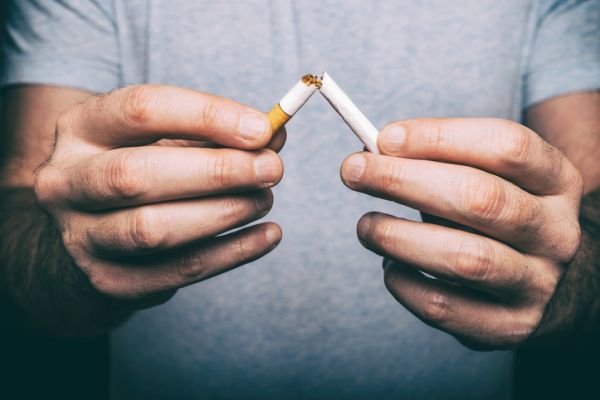In the 1970s, as more and more smokers began worrying about their risk of cancer, the tobacco industry responded by introducing “light” and “low tar” cigarettes, promoting them as a healthier alternative to regular cigarettes.
Need help quitting?
If you smoke and need help quitting, call 1-866-NY-QUITS or visit nysmokefree.com. The New York Smokers’ Quitline offers tips for success, one-on-one coaching, and a free starter kit with nicotine patches or gum for eligible smokers.
One magazine ad even featured a female tennis player clutching a cigarette and saying, “Considering all I’d heard, I decided to either quit or smoke True. I smoke True.”
Eventually science revealed the hard truth: “light” cigarettes weren’t a healthier option. In fact, evidence strongly suggests that they may actually increase a smoker’s risk of developing a type of non-small cell lung cancer called lung adenocarcinoma. While other types of lung cancer declined over the last few decades — due mostly to the fact that fewer people are smoking — this type of lung cancer continues to rise.
What’s the connection? “Light” and “low tar” cigarettes were designed with tiny holes, or vents, around the outside of the filter. Manufacturers claimed that because the vents drew in air when the smoker inhaled, the smoke was diluted, making the cigarettes less toxic than those without vents. Smokers bought into the idea, partly because the vents made the smoke feel smoother and less harsh. It seemed logical.
But research tells a very different story:
- The vents in the filter change the way the tobacco burns, creating more toxins and cancer-causing substances.
- The vents make it easier for smokers to take bigger puffs, which carry the toxins deeper inside the lungs. At the same time, because vented cigarettes deliver less nicotine, smokers may take deeper or more frequent puffs to satisfy their nicotine craving.
Never miss another Cancer Talk blog!
Sign up to receive our monthly Cancer Talk e-newsletter.
Sadly, some smokers — lured by the promise of a “safer” cigarette — switched to “light” cigarettes rather than quitting.
Based on growing evidence of these dangers, in 2010 the federal government prohibited the use of “light,” “mild,” or “low tar” in cigarette descriptions, both on packaging and in ads.
The words may have disappeared, but the vented filters have not. Although cigarettes with non-vented filters are available in the U.S., today almost all cigarette brands are made with the same vented filters that have been linked to an increased risk of lung adenocarcinoma.
It’s time to take the next step. Just a few weeks ago, the Journal of the National Cancer Institute published a study that my colleagues and I conducted.* We reviewed thousands of scientific publications as well as chemistry and toxicology studies, clinical trials, and epidemiological studies focusing on smoking behavior and cancer risk. Our findings reinforce the existing evidence that vented cigarette filters have contributed to an increase in the number of cases of lung adenocarcinoma.
As the article concludes, “…The use of ventilation in the filters of cigarettes has failed to make cigarettes safer, and more than likely has made them more harmful.” We urge the FDA to study this issue further and to consider regulating the use of vented cigarette filters — and possibly banning them.
As the FDA itself makes clear, “There’s no such thing as a safe cigarette.”
*“Cigarette Filter Ventilation and Its Relationship to Increasing Rates of Lung Adenocarcinoma,” Journal of the National Cancer Institute (May 22, 2017).

